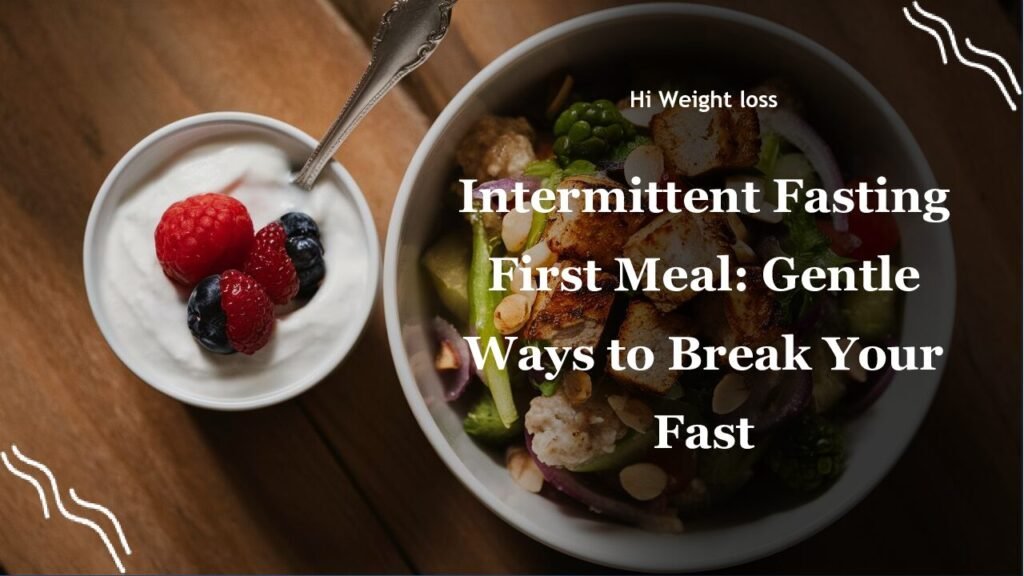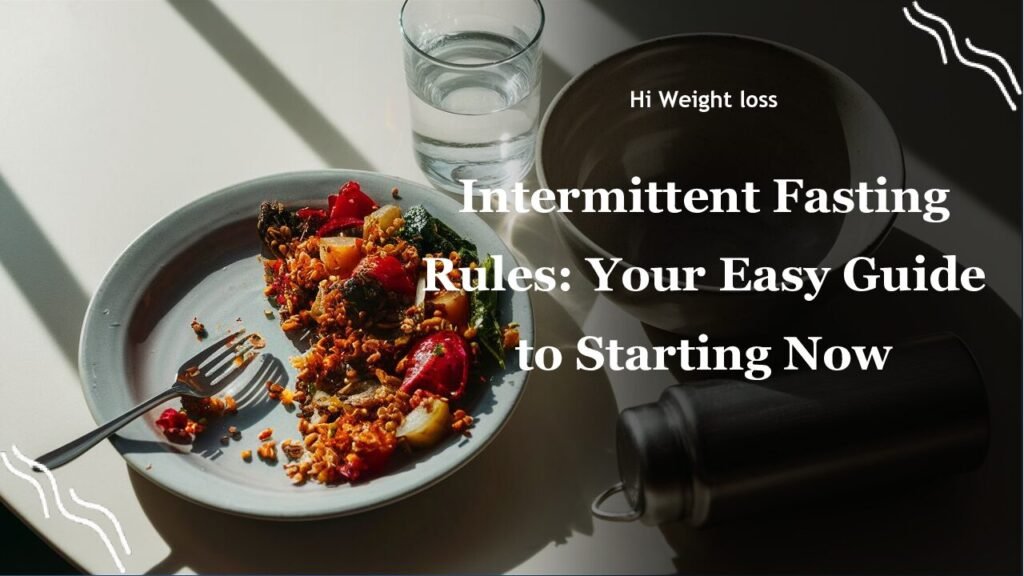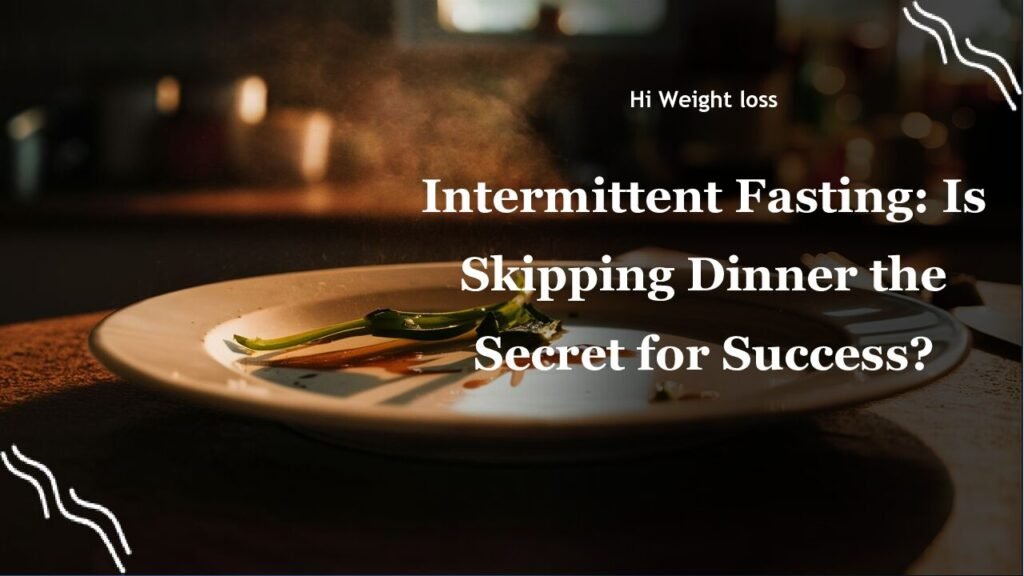Starting intermittent fasting can feel like navigating a maze, especially when it comes to that first meal, and wondering, what is the best first meal for intermittent fasting? You’re likely feeling the tug-of-war between wanting to eat everything in sight and needing something gentle on your stomach. It’s a common hurdle, and the good news is that the right first meal can make all the difference in how your body responds. In this article, we’ll explore some of the best ways to break your fast, focusing on nutrient-dense options that will help you feel full and energized without overwhelming your system, drawing from personal experiences and expert recommendations.
Understanding the Importance of Your First Meal After Intermittent Fasting
Intermittent fasting isn’t just about skipping meals; it’s about timing your food intake. The period after your fast is crucial for reintroducing nutrients to your body. You want something that’s easy to digest and will help keep you satisfied, as opposed to triggering another cycle of hunger pangs. The goal is to make your refeeding experience as beneficial as possible.
I remember when I first tried intermittent fasting, I was so focused on the fasting period that I didn’t give much thought to what I would eat when it was over. My initial first meal was often too heavy, leading to discomfort and a sluggish feeling. I quickly realized that the transition back to eating required careful planning and a gentler approach. That’s why understanding the right foods to break your fast is so critical for success with intermittent fasting.
What Makes a Good First Meal After Intermittent Fasting?
A good first meal post-fast should be balanced and easy to digest. It should also help activate satiety hormones to keep hunger at bay. According to experts at Cookunity, focusing on foods that are low-carb, high-fat, and protein-rich is a great place to start.
Why these types of meals? Well, they provide sustained energy without causing a rapid spike in blood sugar levels, which can lead to crashes and further hunger. Think of your body like a car that’s been running on fumes. You wouldn’t want to fill it with low-grade fuel. Instead, you’d want to give it the premium stuff to ensure optimal performance. The first meal should have similar care in consideration.
Top First Meal Options for Intermittent Fasting
Let’s dive into some specific first meal ideas that align with these principles:
Greek Yogurt with Berries
Greek yogurt is packed with probiotics, which can aid in digestion, and is also a great source of protein. When coupled with berries that offer fiber and antioxidants, it’s a light and nutritious option that’s gentle on your stomach. This option won’t shock your digestive system, but will still provide needed nutrients to wake you up after the fast.
Oatmeal with Almond Milk
A small bowl of oatmeal made with water or unsweetened almond milk is another excellent choice. The complex carbohydrates in oatmeal, as Cookunity highlights, will keep you full and provide a steady energy release. Avoid adding sugar to the oatmeal, which could spike your blood sugar, and keep it as natural as possible. I’ve found that adding a sprinkle of cinnamon also adds flavor without any negative effects.
Vegetable Soup or Salad with Lean Protein
Opt for a veggie-based soup or a salad with lean protein like chicken, fish, or tofu, and you have a meal that’s low in calories, rich in nutrients, and kind to your stomach. These options provide a gentle introduction to eating without overloading your system. I’ve found that making a large batch of vegetable soup at the start of the week makes this a really easy go-to when breaking my fast.
These are great “best foods to break an intermittent fast” and can be customized to your tastes. The key is to choose foods that will fuel your body with the right nutrients and that are easy for you to digest. Remember, that every body is different so it may take a bit of experimenting to find the perfect combo for _you._
Staying hydrated is also crucial when practicing intermittent fasting. It’s essential to drink water frequently during fasting periods and when breaking your fast. Avoid sugary or calorie-heavy drinks as these can counteract the benefits of fasting, as discussed by Healthline.

Tips for Success with Your First Meal
Here are some helpful tips to make the transition after your fast easier:
- Plan Ahead: Have your meal planned before you start fasting to avoid making rushed, unhealthy choices. I often meal prep for the first meal, especially when I know my schedule will be tight.
- Start Small: Don’t overeat when you break your fast. Begin with a moderate portion and see how your body feels. It’s okay to eat more if you are still hungry, but it is always best to start small.
- Listen to Your Body: Pay attention to how your body reacts to different foods. What might work well for others may not work as well for you.
- Stay Consistent: Try to break your fast at the same time each day. This will help your body adjust to intermittent fasting.
Sample First Meal Ideas for Intermittent Fasting Beginners
To give you a better picture, here’s a sample of what a typical day of fasting might look like, focusing on the first meal after a fast:
| Time | Activity | Meal/Hydration |
|---|---|---|
| 8:00 AM | Start Fasting | Water |
| 9:00 AM-12:00 PM | Fasting Period | Water, black coffee, or herbal tea |
| 1:00 PM | Break Fast | Greek Yogurt with Berries & a small cup of herbal tea |
| 3:00 PM | Snack | Handful of almonds and a fruit |
| 6:00 PM | Dinner | Lean protein (fish or chicken) with vegetables |
| 8:00 PM | End of Eating Window | Water or herbal tea |
Remember this is just an example. Your timing may look different and the specifics of the meal and snack will likely also be different. Your schedule should fit your life and not the other way around!
Conclusion
Choosing the best first meal for intermittent fasting doesn’t need to be a complicated endeavor. By focusing on balanced, easy-to-digest meals that are rich in protein and healthy fats, you can avoid the discomfort that comes with shocking your system. Whether it’s the simplicity of Greek yogurt with berries, the warmth of oatmeal with almond milk, or the hearty nature of vegetable soup with lean protein, finding the right meal can make your intermittent fasting journey successful. The key is to plan ahead, start small, and listen to your body. Just like my initial experience with intermittent fasting taught me, the right approach to the first meal will make all the difference.
Now that you’re armed with knowledge, why not experiment with some of these suggestions? Don’t be afraid to share your own experiences and tips with others who are exploring intermittent fasting as well.
FAQ
Can I have coffee with milk during my fasting period?
No, during the fasting period it’s best to stick to zero-calorie beverages such as black coffee, herbal tea or water. Milk adds calories and will break your fast.
How long should I fast?
There are many variations of intermittent fasting, but a popular way is the 16/8 method where you fast for 16 hours and have an 8-hour eating window. You can choose what works best for you and your lifestyle.
Can I exercise during my fasting period?
Yes, light to moderate exercise is typically fine during your fasting period. However, be sure to listen to your body. If you feel weak or lightheaded, it’s best to take it easy.
What if I’m still hungry after my first meal?
It’s okay to eat more if you are still hungry, but be mindful of your portion sizes. Aim for something balanced that includes protein, fats, and complex carbohydrates, and drink plenty of water.
Is it okay to have a cheat meal during intermittent fasting?
While flexibility is important, it’s best not to make “cheat meals” a regular part of your intermittent fasting routine. If you do have a high-calorie meal, just get back on track the next day and be kind to yourself.



